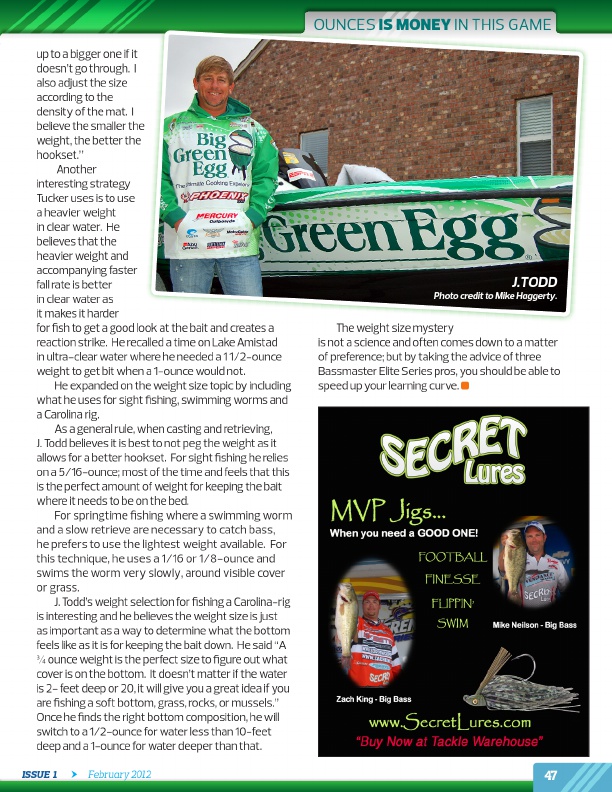
up to a bigger one if it doesn’t go through. I also adjust the size according to the density of the mat. I believe the smaller the weight, the better the hookset.”
Another interesting strategy Tucker uses is to use a heavier weight in clear water. He believes that the heavier weight and accompanying faster fall rate is better in clear water as it makes it harder for fish to get a good look at the bait and creates a reaction strike. He recalled a time on Lake Amistad in ultra-clear water where he needed a 1 1/2-ounce weight to get bit when a 1-ounce would not.
He expanded on the weight size topic by including what he uses for sight fishing, swimming worms and a Carolina rig.
As a general rule, when casting and retrieving, J. Todd believes it is best to not peg the weight as it allows for a better hookset. For sight fishing he relies on a 5/16-ounce; most of the time and feels that this is the perfect amount of weight for keeping the bait where it needs to be on the bed.
For springtime fishing where a swimming worm and a slow retrieve are necessary to catch bass, he prefers to use the lightest weight available. For this technique, he uses a 1/16 or 1/8-ounce and swims the worm very slowly, around visible cover or grass.
J. Todd’s weight selection for fishing a Carolina-rig is interesting and he believes the weight size is just as important as a way to determine what the bottom feels like as it is for keeping the bait down. He said “A ¾ ounce weight is the perfect size to figure out what cover is on the bottom. It doesn’t matter if the water is 2- feet deep or 20, it will give you a great idea if you are fishing a soft bottom, grass, rocks, or mussels.” Once he finds the right bottom composition, he will switch to a 1/2-ounce for water less than 10-feet deep and a 1-ounce for water deeper than that.
ISSUE 1 February 2012
OUNCES IS MONEY IN THIS GAME
J.TODD
Photo credit to Mike Haggerty.
The weight size mystery is not a science and often comes down to a matter of preference; but by taking the advice of three Bassmaster Elite Series pros, you should be able to speed up your learning curve.
47